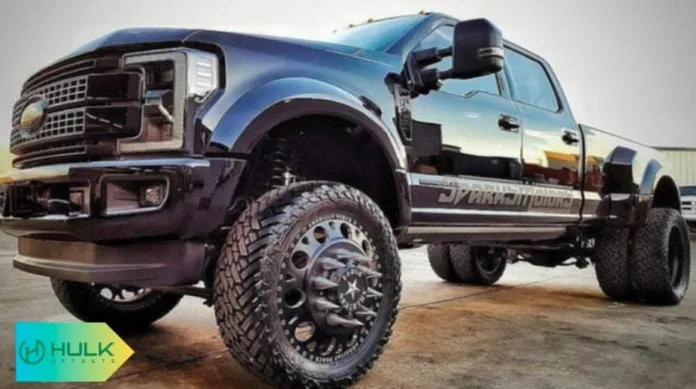Introduction
One of the most effective adaptations available to truck aficionados is wheel replacement. Wider wheels make the truck more aesthetically pleasing and could help it run on different kinds of ground. This thorough investigation will assist you in determining if bigger wheels are a sensible and valuable option for your truck. We will review the benefits and possible drawbacks, arming you with the information to help you decide wisely.
Benefits of Wider Wheels
Improved Traction and Stability
Wider wheels provide a significant advantage in increased traction. Better grip from more rubber on the road surface is particularly beneficial on uneven ground or during bad weather. Driven safer and more under control helps lower the chance of slips and skids. Stability is also enhanced, vital for towing or handling large weights to provide a more comfortable and safe driving experience.
Enhanced Handling
Wider wheels like 20 inch wheels often make handling gains obvious right away. A larger wheel base will significantly increase your truck’s responsiveness, facilitating smoother handling in challenging driving conditions. This is very helpful for trucks that often negotiate difficult terrain or twisting highways. The improvement can make your driving experience less stressful and more fun.
Aesthetic Appeal
One cannot stress the aesthetic appeal of larger wheels. Many truck owners value their more solid and robust look. Top brands include Fuel, Nitto, and Toyo, which have designs that might improve the appearance of any truck. Any vehicle color can be easily complemented by the popular matte black Wheels, gunmetal, and silver, enhancing the overall visual effect.
Considerations Before Upgrading
Compatibility with Truck Model
Make sure the larger wheels you decide upon fit your type of truck. The incorrect size or kind could cause major problems, such as bad fit and vehicle damage. See experts and apply wheel manufacturers’ compatibility tools to choose the correct equipment for your particular vehicle model.
Wheel Offset and Backspacing
A good upgrade depends on an awareness of wheel offset and backspacing. These readings influence the wheel position of your truck’s suspension components and body. Getting this wrong can result in damage and possibly dangerous driving situations as the tyres scrape against the body or suspension.
Suspension Adjustments
Your truck’s suspension might have to be changed or improved to accommodate larger wheels. This can be complex and incur further expenses. Consider how such changes would affect your truck’s warranty and performance. Here, professional counsel is absolutely vital to ensure that any modifications do not compromise your truck’s dynamics.
Potential Drawbacks
Increased Wear on Components
Wider wheels can wear down several truck parts, including steering systems, suspension, and brakes. The extra weight and changed dynamics can strain these parts, causing more regular repairs and replacements.
Reduced Fuel Efficiency
A more extensive profile of wider wheels and additional weight might adversely affect fuel economy. This is so because of changed aerodynamics and more rolling resistance. This can result in more running expenses over time, which truck owners should consider when they create their budget.
Cost
Upgrading to wider wheels costs more than the initial outlay. Consider possible extra costs, such as more maintenance, more fuel consumption, and required vehicle changes. These elements should be part of a thorough budget to prevent unanticipated financial obligations.
How to Choose the Right Wheels for Your Truck
Examine closely your tastes and the necessities of your truck. Think about desired performance enhancements, average driving circumstances, and aesthetic goals. Choose premium materials and reliable brands to guarantee performance and lifespan. Correct alignment and secure fitting of the wheels depend on professional installation.
Conclusion
Choosing to upgrade to larger wheels affects many facets of truck ownership and operation, not only the appearance of your vehicle. Especially in demanding situations, these wheels can significantly increase handling and stability, enhancing driving pleasure and safety. The choice must be balanced against possible negatives, including more wear on vehicle parts, more fuel consumption, and the total cost of the improvement. One should consider the long-term effects of including wider wheels in addition to the immediate advantages. For example, your truck’s cost of ownership over time can change depending on the rising maintenance expenses and possible influence on fuel economy. Moreover, make sure any changes do not violate warranties or compromise the resale value of your truck.
